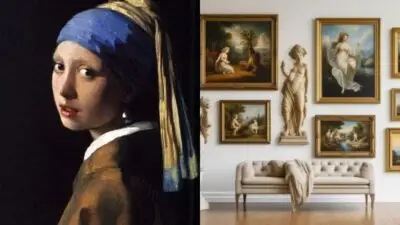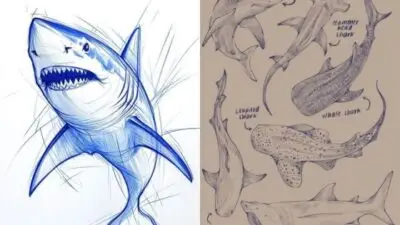Exploring the world of watercolor painting opens up a realm of creativity and expression. You can unlock your artistic potential with a variety of inspiring watercolor ideas that cater to beginners and seasoned artists alike. Whether you’re looking to master the basics or experiment with unique styles, there’s something here for everyone.
As you dive into various techniques, you’ll find that watercolor painting is not just about the final product but also about the process. From vibrant landscapes to delicate floral designs, each piece allows you to express your mood and perspective. By incorporating diverse techniques and tools, you can enhance your skills and develop a personal style that reflects your artistic vision.
To inspire you further, this article will present an array of creative watercolor ideas that will invigorate your projects and help you enjoy the journey of painting. Get ready to transform your approach and discover new levels of satisfaction in your artistic endeavors.
Key Takeaways
- Experiment with various watercolor techniques to improve your skills.
- Use different materials to expand your creative possibilities.
- Explore unique ideas to keep your watercolor practice engaging.


Fundamentals of Watercolor Painting
Understanding the basics of watercolor painting is essential for anyone looking to create beautiful works of art. This includes selecting the appropriate materials, such as paper and paints, as well as mastering various techniques that will enhance your skills.
Choosing the Right Watercolor Paper
Selecting the right paper is crucial for achieving the desired effects in your watercolor artwork. Watercolor paper comes in three primary textures: rough, cold press (notable for its slight texture), and hot press (smooth surface).
- Weight: Look for paper labeled 200 lb (heavy) or 140 lb (medium). Heavier paper can handle more water without warping.
- Cotton vs. Pulp: Cotton paper is more absorbent and durable, while pulp paper is usually less expensive but may not perform as well under heavy washes.
Using high-quality paper allows for better paint adherence and richer color mixability, influencing the overall outcome.
Understanding Watercolor Paints
Watercolor paints are primarily made from pigments suspended in a water-soluble binder. Familiarize yourself with the types of watercolor paints available:
- Student Grade: Affordable and ideal for beginners, these paints may have less pigment concentration.
- Artist Grade: Higher pigment quality leads to richer colors and better permanence, suitable for serious artists.
When choosing colors, focus on a palette that includes primaries and secondary shades. This strategic selection helps with blending and creating a broad range of hues.
Watercolor Painting Techniques
Learning various techniques can greatly improve your ability to manipulate watercolor paints. Some foundational techniques include:
- Wet-on-Wet: Applying wet paint onto wet paper creates soft edges and fluid blends.
- Wet-on-Dry: This technique involves painting wet watercolor onto dry paper, resulting in sharper lines.
- Layering: Building layers of color allows for depth and richness. Always let each layer dry before adding another.
Experimenting with these techniques will encourage you to find your unique style while enhancing your overall skills in watercolor painting.


Materials and Tools
Selecting the right materials and tools is essential for achieving the desired effects in watercolor painting. Quality supplies can enhance your experience and results, whether you are a beginner or an experienced artist.
Selecting Quality Brushes
When it comes to watercolor brushes, the quality directly impacts your painting. Look for brushes made with natural or high-quality synthetic fibers. Natural hair brushes, like those made from sable or squirrel, offer excellent water retention and delicate application.
Consider sizes and shapes:
- Round Brushes: Versatile for details and washes.
- Flat Brushes: Ideal for bold strokes and washes.
- Fan Brushes: Great for texture and foliage.
Invest in a few sizes to cover different techniques. Regular cleaning and proper storage will prolong the life of your brushes, ensuring effective performance.
Exploring Liquid Watercolors
Liquid watercolors provide a vibrant alternative to traditional tube or pan paints. They mix easily with water, allowing for smooth application and beautiful blending. Liquid watercolors are also beneficial for techniques like pouring or using with mixed media.
You can use them in various ways:
- Diluted for washes: They create transparent effects.
- Concentrated for bold color: Ideal for dramatic highlights and details.
Available in sets or individually, selecting a range of colors allows for creative flexibility. Make sure to use quality brands to ensure rich pigmentation and consistency.
Additional Accessories
In addition to brushes and paints, certain accessories elevate your watercolor experience. Start with watercolor paper, which should be thick enough to handle water. Hot press paper is smooth for detailed work, while cold press offers texture for washes.
Other important accessories include:
- Masking Tape: To secure paper and create clean edges.
- Masking Fluid: Protects areas of your painting from being painted over.
- Water Containers and Paper Towels: Essential for cleaning brushes and managing paint flow.
Having these materials at hand will streamline your painting process and enhance your overall results.


Watercolor Painting Styles
Exploring various styles of watercolor painting can enhance your artistic skills and allow for personal expression. Different techniques can produce stunning effects and help you find your unique voice in watercolor.
Realism in Watercolor
Realism in watercolor focuses on accurate representations of subjects. This style emphasizes details, textures, and lighting to create lifelike images.
To achieve realism, consider the following:
- Observation: Study your subject closely.
- Layering: Use transparent layers to build depth.
- Color Mixing: Blend colors to reflect natural tones.
Utilizing fine brushes can help you capture intricate details, while careful application of water can control the flow of your paint. Artists often rely on techniques like wet-on-dry application for sharper edges and clearer features.
Impressionistic Watercolor Techniques
Impressionism with watercolor focuses on capturing light and movement rather than fine detail. This style allows for creative expressions of color and form.
Key aspects include:
- Loose Brushwork: Use broad strokes to create a sense of motion.
- Color Variation: Apply vibrant colors side by side for optical mixing.
- Wet-on-Wet Technique: Combine pigments on wet paper for soft, blended edges.
By prioritizing the overall effect and mood, you can convey emotions through your artwork. Impressionism encourages spontaneity, allowing your intuition to guide your choices.
Abstract Watercolor Exploration
Abstract watercolor explores concepts beyond realistic representation. It emphasizes feelings, colors, and shapes, offering a more personal interpretation of subjects.
When working in this style:
- Freedom of Expression: Allow your emotions to guide your brushstrokes.
- Layering Techniques: Experiment with washes, splatters, and drips to create texture.
- Geometric Shapes: Incorporate lines and shapes for contrast against fluid forms.
Abstract painting invites you to break away from traditional constraints, enabling you to experiment with color combinations and forms. This exploration can lead to unexpected and captivating results that resonate with viewers.


Creative Watercolor Ideas
Exploring watercolor art can lead to unique and imaginative creations. Engaging with different subjects and techniques will enhance your skills and provide fresh inspiration.
Landscape Painting in Watercolor
Landscape painting allows you to capture nature’s beauty using vivid hues and intricate details. Start by selecting a scene that resonates with you, such as mountains, forests, or oceans.
Techniques to Consider:
- Wet-on-Wet: This involves applying wet paint onto a wet surface, allowing colors to blend effortlessly.
- Dry Brush: Use a dry brush to create texture in grassy areas or rocky elements.
Pay attention to the use of bright colors to reflect the mood of the landscape. Experiment with layering washes to build depth and add dimension to your work.
Portraits and Figures with Watercolor
Creating portraits or figures challenges your ability to depict human emotions and characteristics. Begin with light sketching to outline features before filling them with color.
Focus on:
- Facial Features: Use a mix of skin tones, considering the effects of light and shadow.
- Dynamic Poses: Capture movement by portraying figures in action, enhancing interest and engagement.
Incorporate bright accents for clothing and backgrounds to draw attention to your subjects. This approach will bring life and vitality to your artwork.
Modern Watercolor Approaches
Adapting modern techniques can elevate your watercolor practice. Explore unconventional methods to push the boundaries of traditional painting.
Ideas to Try:
- Watercolor on Wood: Experiment with using wood as your canvas. This will add texture and a unique finish.
- Watercolor Grounds: Utilize products designed to make non-watercolor surfaces paintable.
Incorporating mixed media can also enhance your artwork. Pairing watercolors with ink, pastels, or collaged elements allows for exciting and innovative results. Always embrace the unpredictability of the medium.


Improving Your Watercolor Skills
To enhance your watercolor painting abilities, focus on consistent practice, expanding your learning through workshops or online classes, and creating a portfolio of your work. Each aspect plays a crucial role in your artistic development.
Practice and Patience
Regular practice is essential for mastering watercolor techniques. Set aside dedicated time each week to paint. Working on smaller pieces can help you refine your skills without the pressure of a larger canvas.
Utilize different techniques such as wet-on-wet, wet-on-dry, and layering to see how water levels affect your results.
Consider maintaining a sketchbook to experiment with color mixing and composition without the stress of creating a finished piece. Remember, patience is key; improvement comes with persistence over time.
Workshops and Online Classes
Participating in workshops or taking online classes can significantly elevate your skills. Look for local art centers or community colleges offering watercolor courses. These provide hands-on guidance from experienced instructors.
Online platforms like YouTube have plenty of tutorials, focusing on everything from brush techniques to specific subjects like florals or landscapes. A structured curriculum can accelerate your learning curve.
Engaging with other artists in these settings offers invaluable feedback and inspiration. Find a community that encourages sharing and collaboration.
Building a Watercolor Portfolio
Creating a portfolio showcases your artistic journey and progress. Begin by selecting your best works to demonstrate your range and development.
Organize your pieces by themes or techniques employed. This helps in tracking improvement and provides clarity when sharing your work.
Consider photographing your paintings in good lighting to present them well. Online platforms like Instagram can serve as a digital portfolio, allowing you to connect with other artists and receive constructive critiques.
A well-curated portfolio will reflect not just your skills but also your unique style as a watercolor artist.
- 102shares
- Facebook0
- Pinterest102
- Twitter0



